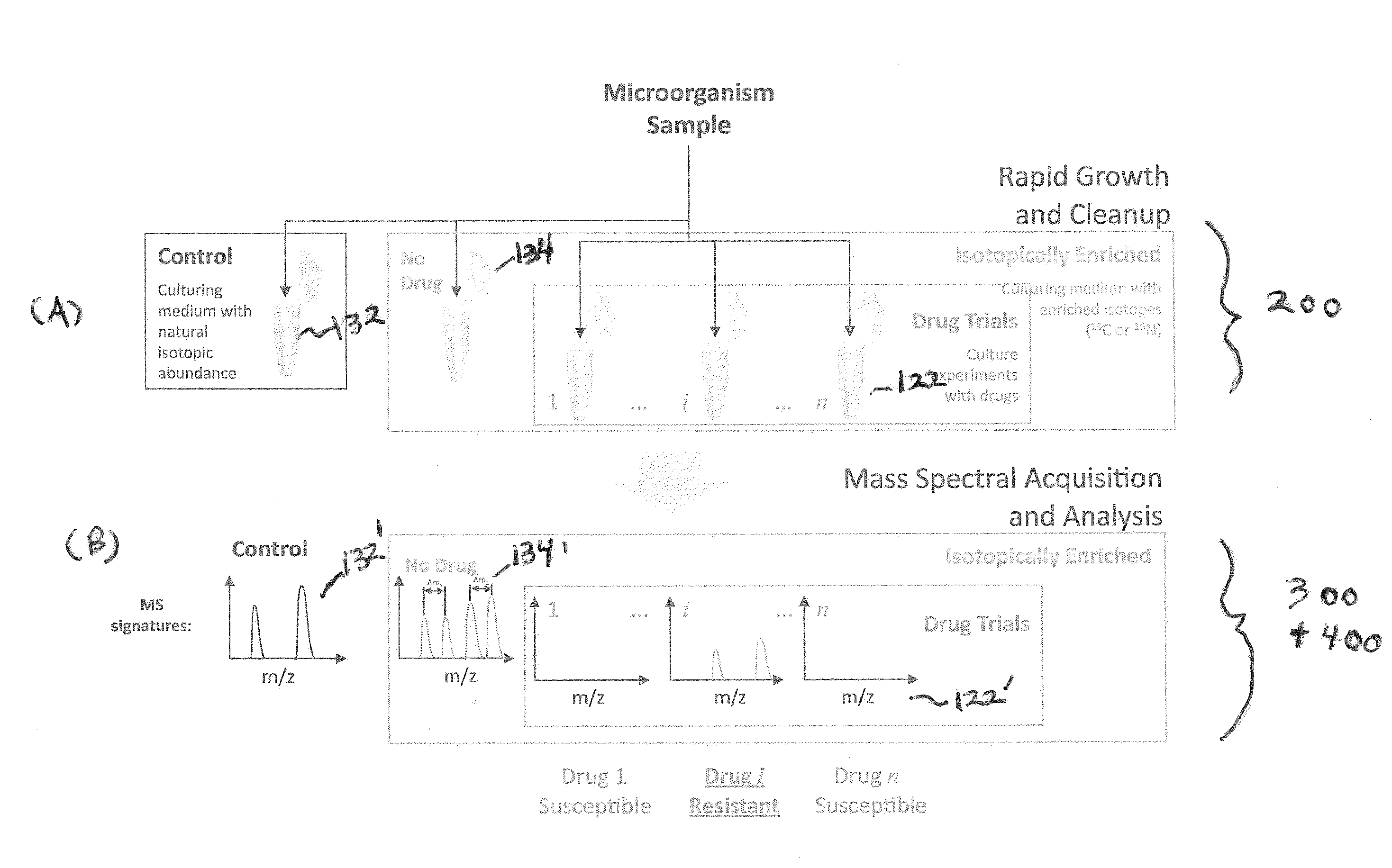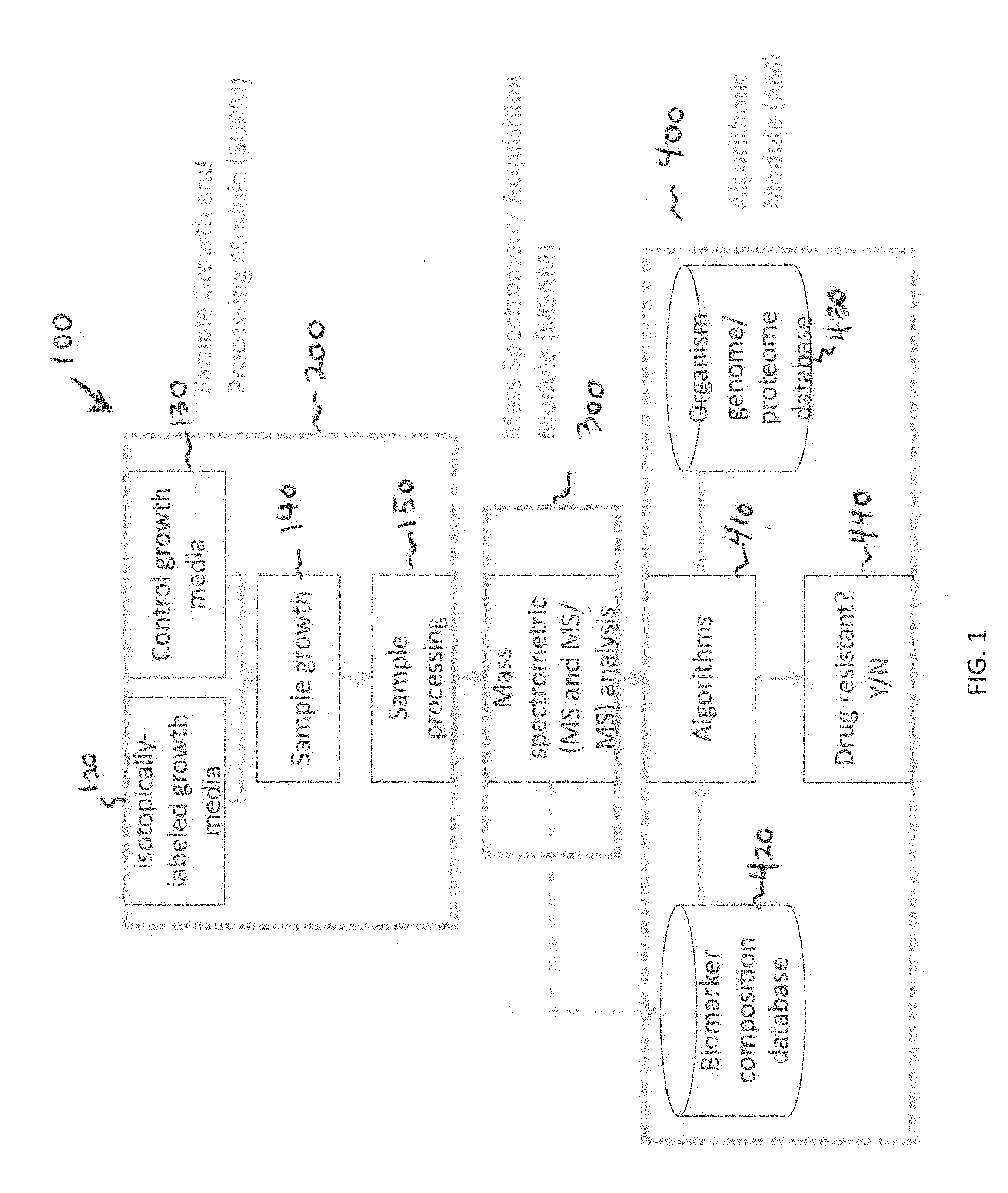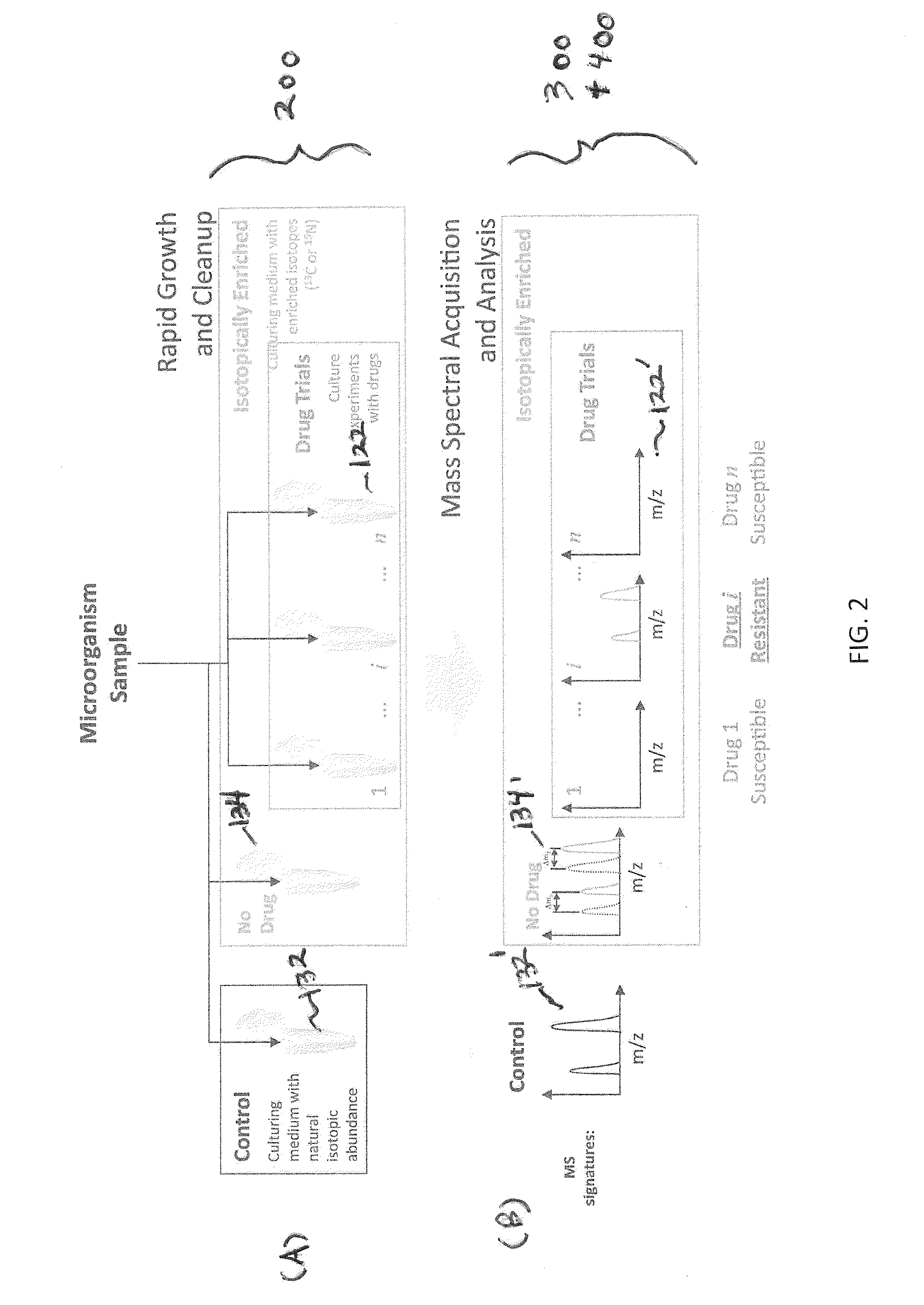Systems and methods for determining drug resistance in microorganisms
a technology of drug resistance and microorganisms, applied in the field of microorganism detection, can solve the problems of untreatable pharmaceuticals, superbugs, and a serious world-wide public health problem, and many of the existing systems and methods for determining drug resistance in microorganisms are neither rapid nor accura
- Summary
- Abstract
- Description
- Claims
- Application Information
AI Technical Summary
Benefits of technology
Problems solved by technology
Method used
Image
Examples
example 1
[0135]Correlation between experimentally-observed and predicted mass shifts, Δm, for selected biomarkers.
[0136]Test organism cultures and sample preparation for mass spectrometry (MS) analysis:
[0137]All chemicals were obtained from Sigma Chemical Co. (St. Louis, Mo., USA) and were used without further purification. Organisms (E. coli) were isolated on tryptic soy agar and one colony from a plate was inoculated into three separate flasks and incubated for six hours at 37° C. Two flasks contained a standard growth medium with natural 13C isotopic abundance (Bioexpress 1000 growth medium: CGM-1000-U-S (unlabeled, 10× concentrate)—Cambridge Isotope Laboratories, Inc. Andover, Mass.), while the third flask contained a 13C isotopically-enriched growth medium (Bioexpress 1000 growth medium: CGM-1000-C-S (13C—98%, 10× concentrate)—Cambridge Isotope Laboratories, Inc. Andover, Mass.). Streptomycin (drug) was introduced into one of the natural isotopic abundance cultures (control sample 132 i...
example 2
Comparison of Observed and Predicted Masses
[0144]An exemplary study is conducted in accordance with the systems and methods of the invention. The following masses are predicted according to algorithmic analysis: (ranked by probability of observation): 1. 5000-5100; 2. 4000-4100; 3. 7000-7100; 4. 6000-6100; 5. 3500-3600.
[0145]The following masses are observed in the experimental sample of the microorganism grown in isotopically-labeled media with the drug (ranked by SNR): 1. 4070; 2. 5020; 3. 8000; 4. 3550; 5. 7500; 6. 3550.
[0146]
TABLE 2PredictedPredictedObservedObservedProbability matchmass rank, nmass rangepeak masspeak rankparameters15000-510050202n = 1, K = 2, k = 1,δm = 10024000-410040701n = 2, K = 2, k = 2,δm = 10037000-7100——46000-6100——53500-360035504n = 5, K = 4, k = 3,δm = 1006
[0147]While the present teachings are described in conjunction with various embodiments, it is not intended that the present teachings be limited to such embodiments. On the contrary, the present teac...
PUM
| Property | Measurement | Unit |
|---|---|---|
| weight | aaaaa | aaaaa |
| temperatures | aaaaa | aaaaa |
| mass | aaaaa | aaaaa |
Abstract
Description
Claims
Application Information
 Login to View More
Login to View More - R&D
- Intellectual Property
- Life Sciences
- Materials
- Tech Scout
- Unparalleled Data Quality
- Higher Quality Content
- 60% Fewer Hallucinations
Browse by: Latest US Patents, China's latest patents, Technical Efficacy Thesaurus, Application Domain, Technology Topic, Popular Technical Reports.
© 2025 PatSnap. All rights reserved.Legal|Privacy policy|Modern Slavery Act Transparency Statement|Sitemap|About US| Contact US: help@patsnap.com



